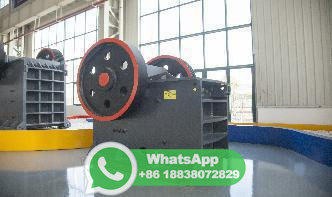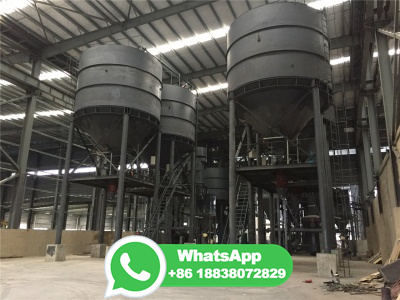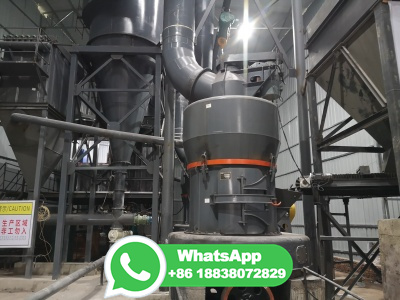
Windplanblauw (Wind Plan Blue) is a 250MW wind farm being developed in the Netherlands by SwifterwinT in collaboration with Nuon, a Dutch subsidiary of Vattenfall and various government bodies. The project will feature 61 larger and efficient wind turbines, which will replace the existing 74 turbines of the Irene Vorrink wind farm, which was ...
WhatsApp: +86 18838072829
forecast the energy consumption of ball mill. In cement. production, Cleary analyse the charge motion, axial. segregation and power consumption in a twochamber. cement ball mill using DEM [15 ...
WhatsApp: +86 18838072829
We do this by generating energy sustainably, saving energy and focusing as much as possible on the circular use of raw materials. Veolia Nederland | 3,689 followers on LinkedIn.
WhatsApp: +86 18838072829
Understanding relationships among operational variables can effectively help to improve control systems and reduce energy consumption in the cement plant as one of the most intensive energy consumer industries. ... Q., Wang, Y., Xu, F. Shi, X. Control strategy of cement mill based on bangbang and fuzzy PID selftuning. in 2015 IEEE ...
WhatsApp: +86 18838072829
Vertical Roller Mill (VRM), a cutting edge technology, can be installed to grind the hard, nodular clinker from the cement kiln instead of inefficient ball mills that can save up to 15% energy [63]. Inclusion of flexible speed drive used for cooling purpose can further reduce electricity consumption.
WhatsApp: +86 18838072829
The use of grinding aids in stirred mills has also been the subject of many investigations and consequently, it was stated that the use of GA in the stirred mills increased the grinding efficiency and reduced the specific energy consumption [15], [16]. Assaad et al. [17] examined the effects of amine and glycol based GAs on cement fineness.
WhatsApp: +86 18838072829
Apr 2016. Adem Atmaca. Nihat Atmaca. In cement industry about 110 kWh of electrical energy is consumed to produce one ton of cement and about 26% of the total electrical power is used during ...
WhatsApp: +86 18838072829
The authors conclude that the energy consumption of the cement factory can be reduced by 30%. The results help to the cement plant's profitability and reduce environmental impact of the cement industry as well as sustainability. ... The operation mode with disabled cement mill envisages air cooling down before the filter bags. The gas has to ...
WhatsApp: +86 18838072829
A feature of ball mills is their high specific energy consumption. A mill filled with balls, working idle, consumes approximately as much energy as at fullscale capacity, that is, during the grinding of material. ... Grinding is an energy intensive process and grinding more finely than necessary wastes energy. Cement consists of clinker ...
WhatsApp: +86 18838072829
The energy consumption of a cement plant has a very important weight in the income statement. Energy comprises up to 70% of variable cost in a cement factory: ... Cement mill (Stage 6: F6). In FYM HeidelbergCement Group factory in Malaga, there are three cement mills: (5, 6 and 7). The function would be:
WhatsApp: +86 18838072829
Total Thermal Energy Use (GJ/t Cement) Total Electricity Energy Use (GJ/t Cement) Total Energy Use (GJ/t Cement) From this study, the world Best Available Technology (BAT) value with of total specific energy consumption GJ/t cement was taken. This value was used for calculating the saving potentials of the whole cement
WhatsApp: +86 18838072829
Plants must score 75 or higher on these 100point scales—indicating that they are more energy efficient than at least 75% of similar facilities nationwide—to be eligible for ENERGY STAR certification. ENERGY STAR certification is available for 20 manufacturing sectors, from cement and steel to glass and commercial bakeries.
WhatsApp: +86 18838072829
In this study, mass and energy balances were built for a typical clinker kiln producing 2,825 t clinker /day, a clinkercement ratio of, and a raw mealclinker ratio of, with an estimated energy consumption of 121 kg coal /t clinker and 132 kWh el /t clinker.
WhatsApp: +86 18838072829
The current world consumption of cement is about billion tonnes per annum and it is increasing at about 1% per annum. The electrical energy consumed in cement production is approximately 110 kWh/tonne, and around 40% of this energy is consumed for clinker grinding. There is potential to optimise conventional cement clinker grinding circuits and in the last decade significant progress has ...
WhatsApp: +86 18838072829
The typical electrical energy consumption of a modern cement plant is about 110120kWh per tonne of cement. The trends of Indian cement industry, the second largest after China, and the world best ... Cement mill kWh/t cement 30 25 Miscellaneous Mining and transportation kWh/t clinker Packing house kWh/t cement
WhatsApp: +86 18838072829
For example, a steel mill was using 90,000 MWh of electrical energy per month, at a cost of million each year. ... Using intelligent automation solutions to get the big picture of energy use in a cement plant helps to identify where operational changes can be made to reduce energy consumption and costs. Key concept: Affinity laws a ...
WhatsApp: +86 18838072829
1. Introduction. Cement manufacturers face economic and environmental challenges due to their highenergy consumption. Periodic data collection on industry and other energyconsuming industries is crucial to setting objectives for energysaving studies (Madlool, Saidur et al., Citation 2013).Atmaca and Yumrutaş (Citation 2014) suggested that an estimates of 54% thermal efficiency could be ...
WhatsApp: +86 18838072829
In this study, certain measures are implemented in an existing raw mill in a cement factory and the specific energy consumption of the unit is calculated to be kWh/ton farine.
WhatsApp: +86 18838072829
The specific energy consumption and the cement setting times increased in the order of combined grinding, HPRM grinding, and horizontal roller mill grinding. ... Blaine fineness and mill feed compositions indicated energy savings of 35 to 40% when compared with the specific energy consumption of an optimized ball mill in the same plant [4].
WhatsApp: +86 18838072829
The consumption of the energy in the cement plant is mainly due to raw mill, cooler, preheater and rotary kiln . The total energy loss of the plant is generally accounted for about 3539% of the total energy input . This energy loss is due to the loss from the exhaust gas, cooler and the radiation heat transfer from the kiln cell.
WhatsApp: +86 18838072829
Low Steel Consumption When grinding cement, the abrasion of the ball mill is g/t, while that of the roller press is /t, so it can meet the requirements of grinding white cement. Low Noise The noise of the ball mill is more than 110d, while the cement roller press is about 80dB. Environmental Friendly
WhatsApp: +86 18838072829
The results show that approximately t, t, and t of materials are required to produce a ton of the product in raw material preparation, clinker production, and cement grinding stages, and their waste rates are %, %, and %, respectively. The recycling rate of wastes during clinker production is remarkably higher than ...
WhatsApp: +86 18838072829
Cement manufacturing is energy intensive and a major source of greenhouse gas (GHG) emissions from the industrial sector. In 2019, ninetytwo cement plants reported emissions of 67 million metric tons of carbon dioxide equivalents (CO2e) to the Environmental Protection
WhatsApp: +86 18838072829
The results showed that steel sector, cement and plaster sector, and construction sector have the highest contribution in EC. ... Energy consumption at steel mill: Steel timber a: : : : GJ/ton: Natural gas and electricity: Energy consumption at steel mill: Hot rolled plate a: : : :
WhatsApp: +86 18838072829
Energy use in the steel industry has been declining. A ten year historical trend () of the steel industry indicates that there has been a 38 percent decline in the total energy consumption used in the industry . The largest portion, 34 percent of the decline in the total energy consumption occurred between 1998 and 2006.
WhatsApp: +86 18838072829
Cement production in the world is about billion ton per year [4]. About 2% of the electricity produced in the whole world is used during the grinding process of raw materials [5]. Total electrical energy consumption for cement production is about 110 kWh/t of cement, roughly two thirds of this energy is used for particle size reduction [6].
WhatsApp: +86 18838072829
Mineco Holding Company Profile | Dronten, Flevoland, Netherlands | Competitors, Financials Contacts Dun Bradstreet
WhatsApp: +86 18838072829
In the cement industry, the total energy consumption accounts for 5060% of the overall manufacturing cost, while thermal energy accounts for 2025% (Wang et al., 2009; Singhi and Bhargava, 2010).The modern cement industry requires 110120 kWh of electrical power to produce one ton of cement (Mejeoumov, 2007).Thermal energy is used mainly during the burning process, while electrical ...
WhatsApp: +86 18838072829
The energy consumption of the total grinding plant can be reduced by 2030 % for cement clinker and 3040 % for other raw materials. The overall grinding circuit efficiency and stability are improved. The maintenance cost of the ball mill is reduced as the lifetime of grinding media and partition grates is extended.
WhatsApp: +86 18838072829
Cement grinding plant is the last station in the cement production line. Its power consumption accounts for 65% 75% of the whole cement plant. Therefore, reducing the energy consumption in the cement grinding process is of great significance for energy conservation and emission reduction of the cement manufacturing plant.
WhatsApp: +86 18838072829